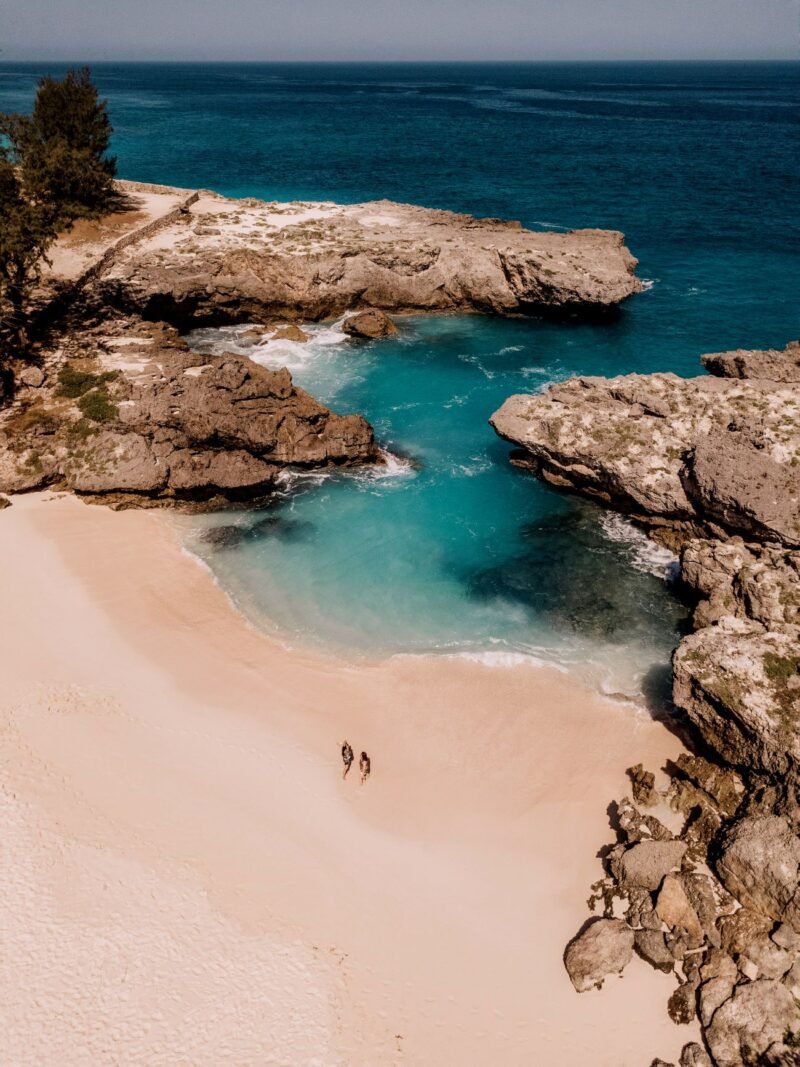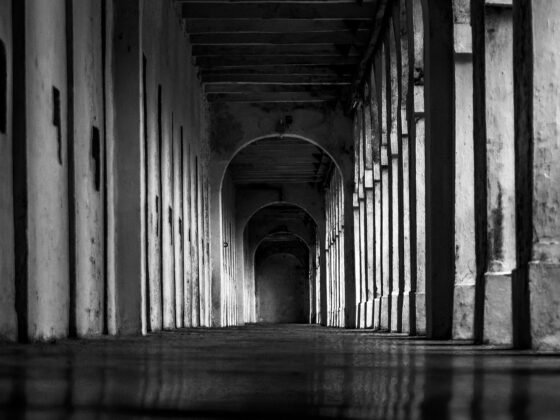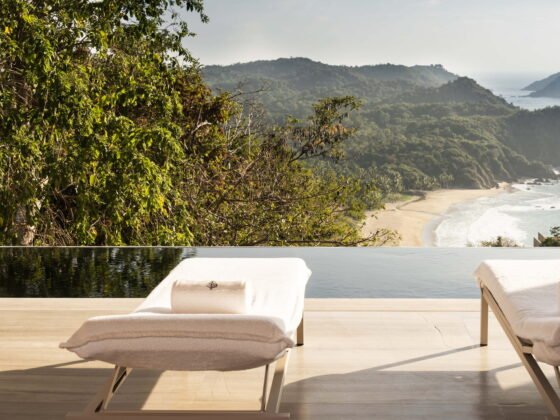Nestled in the pristine waters of the Indonesian archipelago, Sumba Island stands as a hidden gem, awaiting discovery by those seeking a blend of cultural richness and untouched natural beauty. This enchanting island, often referred to as the “Land of the Marapu,” is a captivating tapestry of traditional villages, meandering landscapes, and a deep-rooted cultural heritage that sets it apart from its neighbouring counterparts.
Sumba Island, part of the Lesser Sunda Islands, is located in eastern Indonesia. Its rugged terrain, lush hills, and expansive savannahs create a landscape that is both diverse and captivating. The island is renowned for its pristine beaches, vibrant coral reefs, and traditional villages that offer a glimpse into a way of life steeped in centuries-old traditions.
If you have not heard about Sumba, it is the perfect time to acquaint yourself with this paradise on Earth. Here is what to see in it:
The Alluring Weekuri Lake
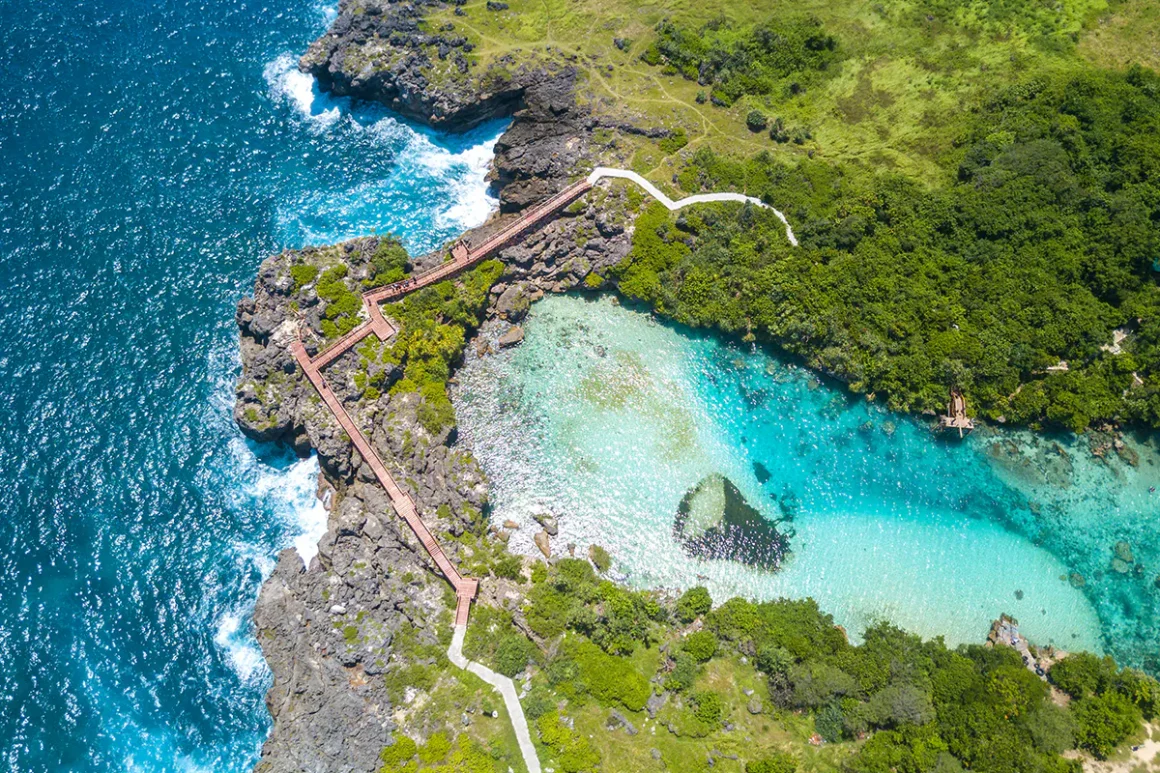
Weekuri Lake stands as an exotic concealed haven brimming with natural beauty, nestled in Kalenarogo Village, Kodi Utara, in Southwest Sumba. What sets Weekuri Lake apart is its unique feature of being filled with salty water! Interestingly, this lake is essentially a lagoon, with water flowing in from the nearby sea. Encircled by vibrant reefs and lush greenery, it is a breathtaking sight.
The lake is fed by seawater streaming through cracks in the reef, resulting in water that boasts a stunning bluish-green clarity. From the lake’s surface, one can easily spot the white sand resting at the lake’s bottom, creating a mesmerizing underwater view. Imagine the joy of stepping onto Weekuri Lake’s shores—it’s an experience that etches itself into your memory.
Notably, access to Lake Weekuri is limited to travel by foot or two-wheeled vehicles, adding an adventurous touch to the journey.
The Magic of Bawana Beach

Enchanting stone cliffs lend a captivating allure to this beach. Bawana Beach’s allure is further accentuated by its pristine expanse of white, velvety sand. The surrounding greenery adds an extra layer of beauty to the beach ambiance. For those seeking solace away from the crowds, Bawana Beach offers the tranquility of a remote and secluded oasis.
Kampung Ratenggaro

Nestled in Southwest Sumba, the traditional village of Kampung Ratenggaro, found in Umbu Ngedo Village, stands out for its distinctive Uma Kelada—a towering roof that reaches an impressive 15 meters in height. However, the uniqueness of this village extends beyond its architectural wonders; it boasts a collection of 304 historic megalithic tombs that date back an astounding 4,500 years.
What adds to the allure of Kampung Ratenggaro is its strategic location at the confluence of the beach and the Waiha River. This positioning ensures that visitors to the village are treated to breathtaking natural vistas. To reach this cultural and natural gem, a 90-minute bus journey from Tambolaka town is required. Disembarking at Bondo Kodi, the journey continues with a local motorcycle taxi ride, immersing travelers in the scenic journey to this unique village by the sea.
The Exotic Mangrove of Walakiri
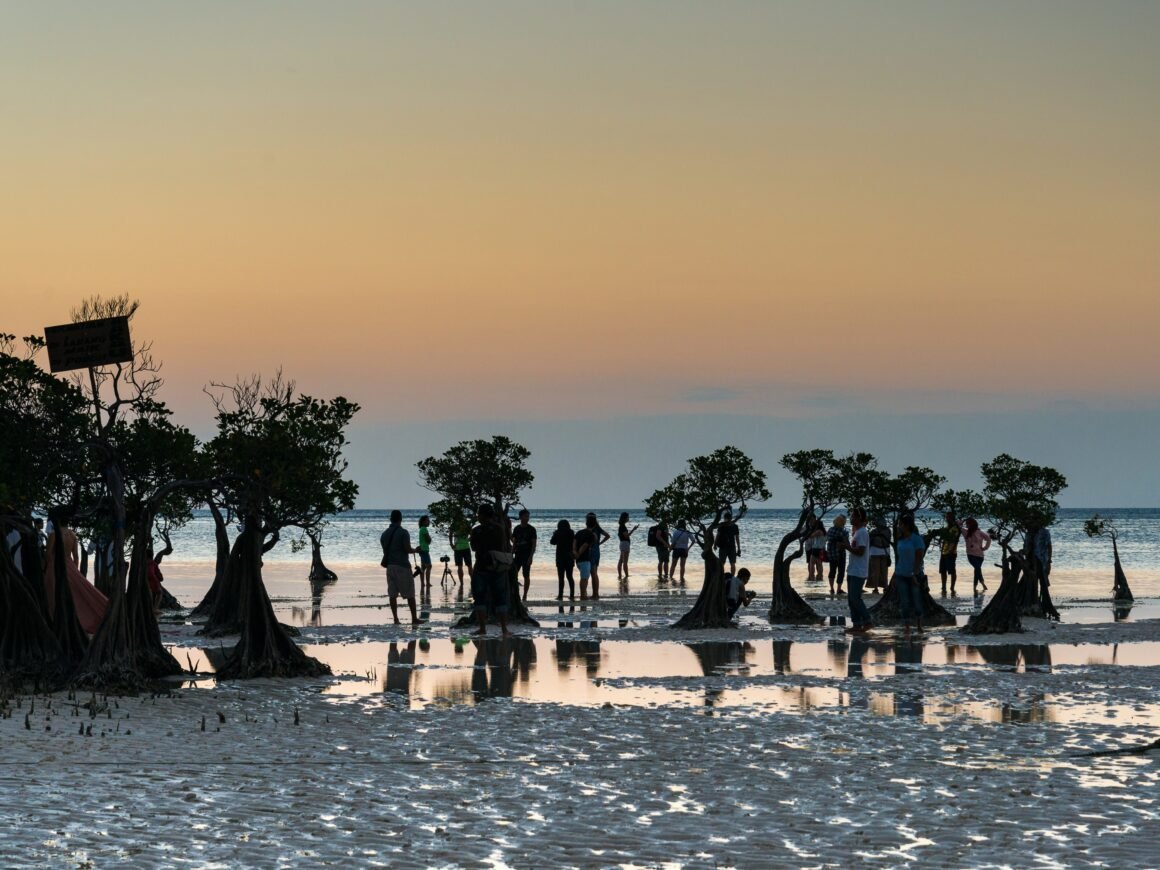
The beach becomes even more picturesque during low tide. Why, you ask? Well, it’s the perfect time to capture stunning photos with the distinctive mangrove trees adorning one side of the beach. These mangroves boast gracefully twisted twigs and leaves that aren’t too densely packed—making them ideal for creating captivating silhouette photos, especially during the enchanting sunset. Moreover, the beach offers opportunities to sunbathe, swim, or simply unwind while savoring the refreshing taste of coconut ice.
Soothing in Waimarang Waterfall

If you’re someone who revels in water-based adventures, Sumba is a true paradise for you. The island boasts numerous captivating water attractions, and among them is the breathtaking Waimarang Waterfall—an exquisite masterpiece crafted by nature.
At Waimarang Waterfall, you can immerse yourself in the serene ambiance, indulging in the tranquility of a natural pool surrounded by stone walls. The cliffs, adorned with greenish moss, enhance the overall natural charm of this place. Furthermore, you have the opportunity to engage in meditation, relaxation, or even yoga alongside the pool, as the soothing sounds of nature serve as a therapeutic balm for stress. It’s an idyllic setting to connect with the elements and find solace in the beauty of Sumba’s water wonders.
Tanggedu Waterfall

Nestled in Tanggedu Village within the Kanatang District of East Sumba Regency, Tanggedu Waterfall is a must-visit destination for its distinctive rock reliefs and enchanting surroundings. The pristine blue water enhances the beauty of the waterfall, creating a truly wonderful sight. With its considerable water flow, Tanggedu Waterfall offers an excellent opportunity for adventurous activities like body rafting or tubing. Additionally, the river’s moderate depth adds to the appeal, making it an ideal spot for some enjoyable water-based fun.
The Traditional Fabric Weaving at Kampong Tarung

Located in Waikabubak, Kampung Tarung stands as one of the indigenous villages within the heart of the town, preserving its authenticity amidst modern surroundings. This village is a haven for witnessing the local craft, with women diligently weaving intricate fabrics that may require up to a year to complete. These skillfully crafted fabrics are transformed into traditional cloths known as “ikat.”
Sumba boasts a myriad of ikat patterns, often featuring depictions of animals and tribal designs. To explore this cultural gem, consider enlisting the assistance of a guide to navigate the village. Alternatively, if you have a penchant for hands-on experiences, you can immerse yourself in the art of weaving by participating in a workshop within the local community.
The Local Handicrafting at Waikabubak
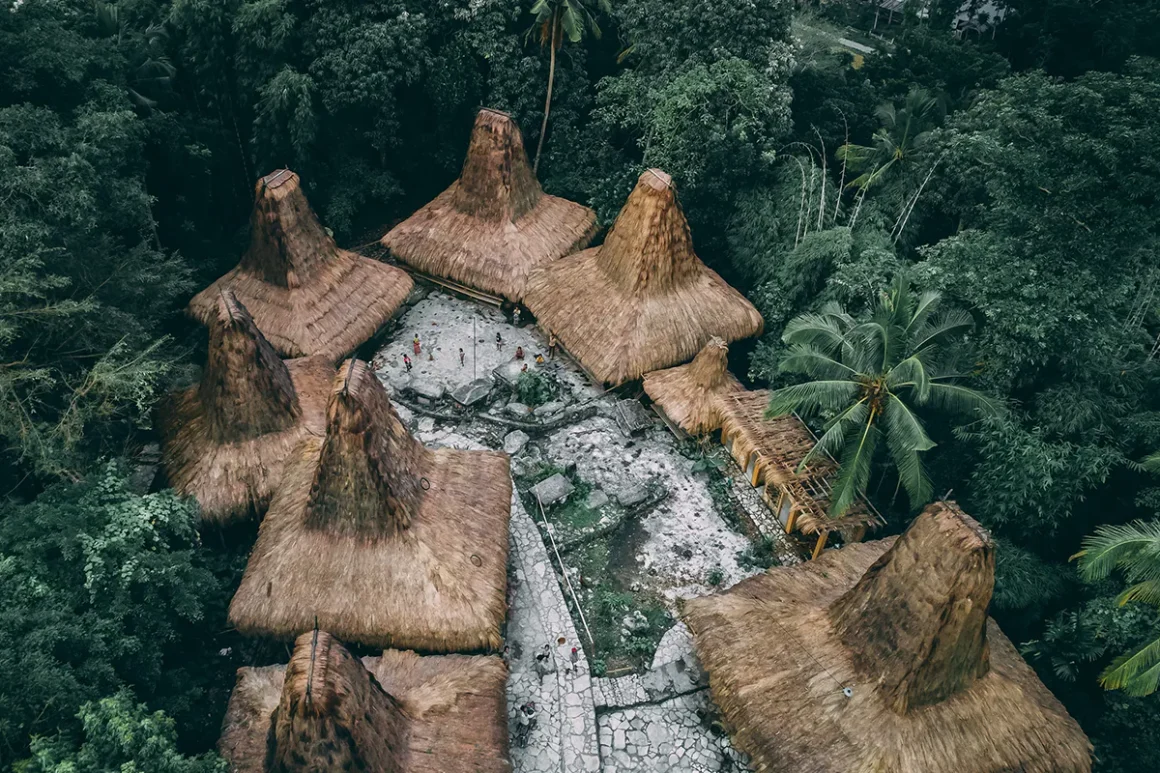
Enhance your travel experience by indulging in some souvenir shopping! For traditional handicrafts, Waikabubak has you covered. The Waikabubak Inpres Market, situated in town on Jalan Ahmad Yani near the bus terminal, is the go-to spot. Here, you’ll discover a diverse array of local handicrafts, including the renowned ikat cloth, distinctive Sumba machetes, and bracelets crafted from banana leaves.
More than just a marketplace, the Waikabubak Inpres Market is the heartbeat of the local community. Besides handicrafts, you’ll find an assortment of goods ranging from essential foods and vegetables to clothing. As you explore, don’t miss the chance to visit the picturesque Praijing village, where traditional houses offer a charming panorama, adding another layer of cultural richness to your journey.
The Sunsets at Wairinding Hill
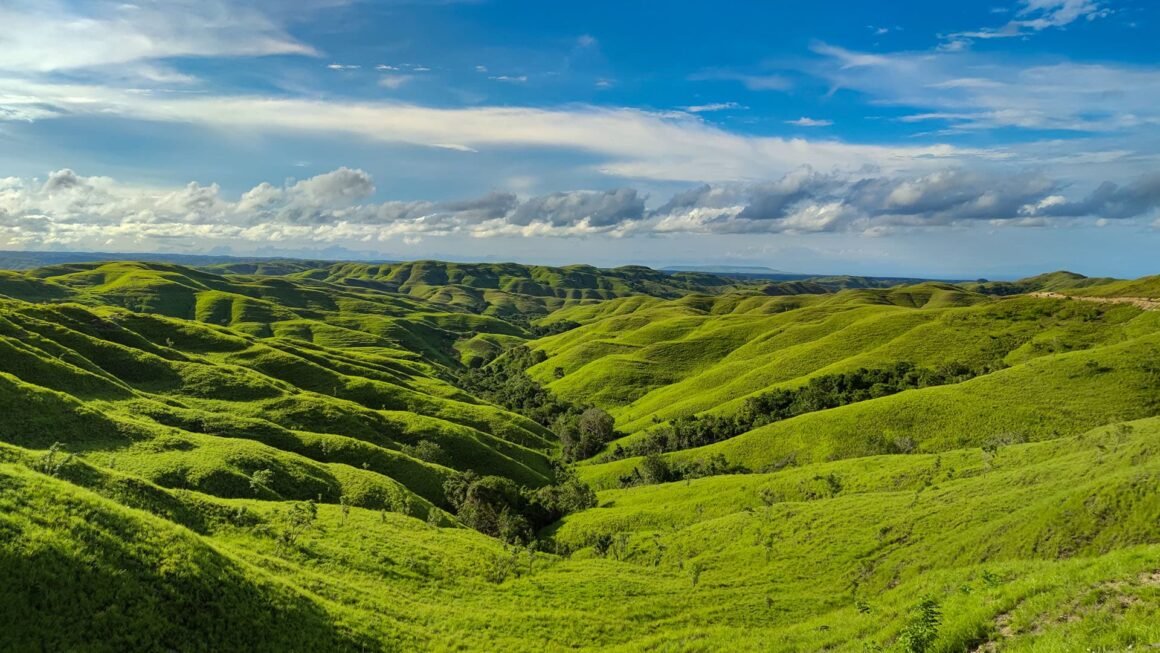
Wairinding Hill claims its fame as Sumba’s highly celebrated Instagram-worthy hill. Situated just 45 minutes away from Waingapu city in East Sumba, this popular tourist destination unfolds as a series of expansive savannah plateaus. The meadow, adorned with lush greenery, showcases its verdant splendor during the rainy season, spanning from November to May.
In contrast, the months from July to October transform Wairinding Hill into a sprawling golden tapestry, creating a mesmerizing natural landscape. The hill gained even more recognition after serving as a cinematic backdrop in the silver-screen movie “Pendekar Tongkat Emas” (Golden Cane Warrior) by the esteemed Indonesian film director and producer, Mira Lesmana.
Why Sumba?
- Cultural Riches of Sumba: Sumba is a living testament to the resilience of ancient cultures. The island is renowned for its unique blend of animist beliefs and indigenous practices, prominently centered around the worship of ancestral spirits known as “Marapu.” Visitors have the opportunity to witness captivating rituals, intricate handwoven textiles, and traditional ceremonies that provide insight into the spiritual fabric of Sumbanese society.
- Pasola: A Spectacle of Tradition: Among the myriad of cultural events on Sumba, the Pasola stands out as a captivating display of tradition and skill. This annual mounted spear-fighting competition takes place on vast, open fields, with colorful, adorned participants engaging in a ritualistic battle. The Pasola is not merely a sport; it is a spiritual event, symbolizing the balance between the physical and metaphysical worlds.
- Sumbanese Architecture and Megalithic Tombs: Traditional Sumbanese villages are a testament to the island’s rich architectural heritage. Houses with towering peaked roofs, adorned with intricately carved motifs, reflect the cultural identity of the people. The island is also home to ancient megalithic tombs, such as the impressive Watu Karagata, which stands as a silent witness to the island’s storied past.
- Woven Treasures: Sumba’s Textile Traditions: Sumba is renowned for its exceptional handwoven textiles, known as “ikat.” These textiles are crafted with meticulous precision, often telling stories through intricate patterns and designs. The traditional process of creating ikat involves a complex method of tying and dyeing threads before weaving, resulting in vibrant and unique pieces of wearable art.
- Natural Wonders: Pristine Beaches and Breathtaking Landscapes: Beyond its cultural allure, Sumba Island boasts a wealth of natural wonders. Pristine beaches with powdery white sand and crystal-clear waters, such as Nihiwatu and Weekuri Lake, offer idyllic settings for relaxation and exploration. The island’s untouched landscapes, including rolling hills and dense forests, beckon adventurers to discover its unspoiled beauty.
- Conservation and Sustainable Tourism: Recognizing the need to preserve its unique cultural and natural heritage, Sumba has embraced sustainable tourism practices. Efforts are underway to balance the influx of visitors with the preservation of the island’s ecosystems and traditions, ensuring that future generations can continue to marvel at the island’s beauty.
Sumba Island, with its rich cultural tapestry and untouched landscapes, invites intrepid travelers to embark on a journey of discovery. From the rhythmic rituals of the Pasola to the intricate artistry of woven textiles, Sumba offers an immersive experience that transcends the ordinary. As the world becomes increasingly connected, Sumba stands as a testament to the enduring beauty of cultures and landscapes unmarred by the passage of time.

